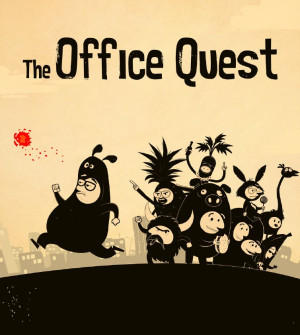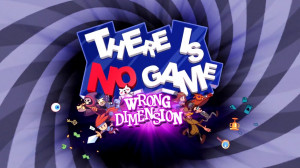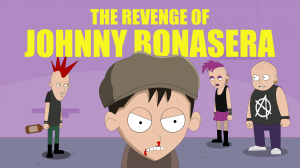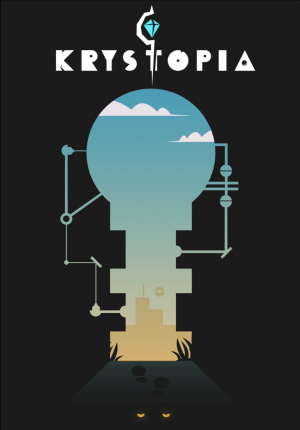Review for Dude, Where Is My Beer?

If you’ve ever walked into a bar and been greeted by an overwhelming choice of wackily named, expensive craft beers and thought wistfully about simpler times, then Dude, Where Is My Beer? is likely to resonate with you. This brew-themed adventure with a classical point-and-click interface and cartoony graphical style will take you on a tour of the streets and pubs of Norway with some fairly challenging puzzles along the way, but a plot that lacks pizazz and ultimately no real closure.
Perhaps unsurprisingly, the first task is to help our mustachioed protagonist procure a pilsner after a long bus journey to a station in Oslo. It’s only after speaking to Stellan the hipster bartender (complete with man-bun), though, that we discover the true horror of the city where we’ve arrived: it’s nothing but wall-to-wall craft beers that cost upwards of 24 euros each, and there’s not a pilsner in sight. The humanity! We also discover that our buddy Carl, who worked in the pub, has been fired for being ‘too old’ at just 38.
It turns out that a Master Brewer has been winning the yearly brewery competition where the prize is to be able to decide all of the beers to be sold for the rest of the season – and he’s decided that pilsner is very much out, and pricey exotic beers are in. Worse than that, he’s somehow bewitched everyone into thinking they like this new beer regime. With this tidbit of knowledge under our belt, it’s time to scour the city’s other bars and chat with its denizens to find out more about this mysterious Master Brewer, and more importantly, actually find a pilsner to drink. Until then, we’ll just have to manage with the very non-pilsner-like craft beers the pubs have to offer.
It’s a fairly simple but intriguing enough premise, though sadly the Master Brewer plotline isn’t thoroughly explored or even concluded, contributing to an all-round unsatisfactory and slightly abrupt ending. This is presumably to set up for a part two where, the game teases, the story will continue.
At least our protagonist – who describes himself as a ‘normal guy’ – is likable enough. He wants his beer to be straightforward and is warm to the hipsters surrounding him, despite how confusing he finds them, throwing out comments such as, “I like his shorts” or “great hair!” As he wanders Oslo’s gentrified streets, listening to trendy young folk swap tasting notes on silly-sounding craft beers (Plum Sauce Leather Saddle Scottish Ale anyone?) but not really understanding their lingo, it’s clear he’s feeling increasingly lost in a world that’s left him behind.
Despite his increasing disillusionment, the tone is light throughout, with humorous dialogue that may raise a smile but doesn’t really get to the point of being laugh-out-loud funny. In one bar he’s browsing the bookshelf and picks one up to read: ‘How to brew your own beer in 378 steps.’ “No thanks,” he says. “Step 1 – buy a beer. Done”. In another pub, you can click to look at a spider and our protagonist helpfully reminds us that if we have arachnophobia, we can turn off spiders in the main menu – “or was that in another game?” (For the spider-shy reading this, you can’t actually disable arachnids in the menu, although there’s no need to worry, they’re just tiny cartoon ones.)
There’s plenty of opportunities to chat with the locals (with the exception of most of the metalheads in the rock pub Kniven, who our main character finds ‘scary’) using the game’s simple dialogue system. A list of response choices appears at the bottom of the screen, and the information gained helps you in your quest to find your elusive pilsner, although there aren’t any real conversational-based puzzles. There are a couple of oddball characters who stand out in the sea of hipsters, including the Quiz King with his crown, fluffy onesie and knowledge of all quiz answers; and the Friendly Monster, a sports mascot with a giant foam hand and horse-like head, hanging around outside the sports bar and sweltering in the heat. On the downside there’s no voice acting, unfortunately.
The interface is a classic SCUMM-style affair: the bottom left of the screen is filled with verbs such as use, look at, give, open and talk to, which you can choose with a click and then select the person or object on-screen you want to perform that particular action with (handily, there are also keyboard shortcuts for each of these actions). Right-clicking clears your command choice, and a simple left-click will move the protagonist around the screen. Inventory items can be found in the bottom right. There’s no hotspot highlighter, although areas and items you can interact with do have a descriptive label that pops up nearby if you hover your cursor over them. That said, a couple of objects can be easily overlooked, so you’ll need a keen eye. The save system is manual, with just four save slots to use. However, since it’s a relatively short experience (somewhere between four and five hours for most players) with no branching paths, that shouldn’t prove to be problematic.
The cartoon-style graphics look great, with our main character nicely animated as he walks and talks (the mustache wobble as he speaks is an adorable touch) and the exclusive use of muted greys, reds, pinks and blues giving the game its own distinctive style. There aren’t any cutscenes, although often upon entering a new location you’ll overhear some of the nearby youths discussing craft beers and yeast (this is the first time I’ve seen brettanomyces mentioned in an adventure game). Some of the activity in the background helps bring the world to life a little. For example, at one point while walking down a street, a chap rides by on a scooter and you automatically move back onto the pavement to get out of his way; another time the same scene shakes as a tram zooms past, while pigeons flit about in the background. This is enhanced by the sound effects, with background chatter in some of the busier pubs.
The musical accompaniments match the game’s good looks. At the beginning we’re greeted with a lively instrumental tune that wouldn’t be out of place in a bohemian cafe in Europe. The rock pub has a suitably metal guitar-driven song blasting out in the background, and the club (The Crypt) you also visit has fitting dance music and horns blaring while the patrons move along to the music. The highlight, perhaps, is the Bigmouth Billy Bass in The Mistress bar. If you interact with it, it’ll leap to life, flapping around on the wall singing an incredibly catchy pilsner-themed track with Russian dancing music vibes. I’m not ashamed to admit I interacted with it several times.
As you might expect in a beer-themed game, there are booze-based mechanics too. The very first thing you see upon starting the game is a delightful little loading bar, which as it fills moves from sober through tipsy through to drunk and finally loaded. This is the same ‘beer-o-meter’ that tells you in-game just how inebriated you currently are, and how drunk you are can affect some of the actions you take. For instance, you’re a ‘socially awkward person that cannot speak to strangers’ unless you’ve got some booze in your belly. The inebriation meter does eventually go down, so if you accidentally get too drunk it’s possible to edge your way back to sobriety if you need to be more clear-headed to complete a particular task.
The inebriation meter adds a layer of complication, albeit an inventive one. How drunk do we need to be – if at all – to remove a wallet from a disgusting toilet? How can we suddenly learn to understand French? It’s easy enough to keep yourself topped up with beer if need be from the pubs that are all around (of course none of those beers are the lager you’re so desperate for). Sadly you can’t get any more drunk than ‘tipsy;’ if you try, you’re informed that you can get drunker in a future part two, so it doesn’t seem that the mechanic has been fully utilised yet. As well as the mainly inventory-based obstacles, there’s also an interesting conundrum where you crack into a bartender’s cell phone in order to snoop on a group chat which you hear has been discussing pilsner.
The puzzles provide a decent level of challenge, with a couple of occasions where you may be scratching your head. In those instances, you can turn to the hint feature, a black cat who’s actually pink, hanging out in the Dive bar. The helpful creature will occasionally provide clues if you ask, although on a couple of occasions it told me there were no hints available as it was currently ‘too easy’ and that I needed to look around more. So, the feline equivalent of a gamer on the internet telling you to ‘git gud.’ The availability of clues might be linked to the three difficulty levels available from the options menu – social drinker, average, and true gamer – but the impact of the difficulty levels isn’t explained explicitly in-game (my playthrough was completed on ‘average’).
Ultimately, despite the unique hand-drawn aesthetic and catchy soundtrack, as well as some decently challenging puzzles, the simple plot that unfolds feels too simple without any real payoff, and we find out very little about the mysterious Master Brewer and his bewitching ways, despite this seemingly being set up as the core premise early on. Hopefully the adventure will kick the story up a notch in future installments, as there’s potential for a more exciting beer-themed romp here. And to that, I say skål! Or cheers.
WHERE CAN I DOWNLOAD Dude, Where Is My Beer?
Dude, Where Is My Beer? is available at:
- GOG
- Itch.io -35%
- Steam
- HumbleBundle



























